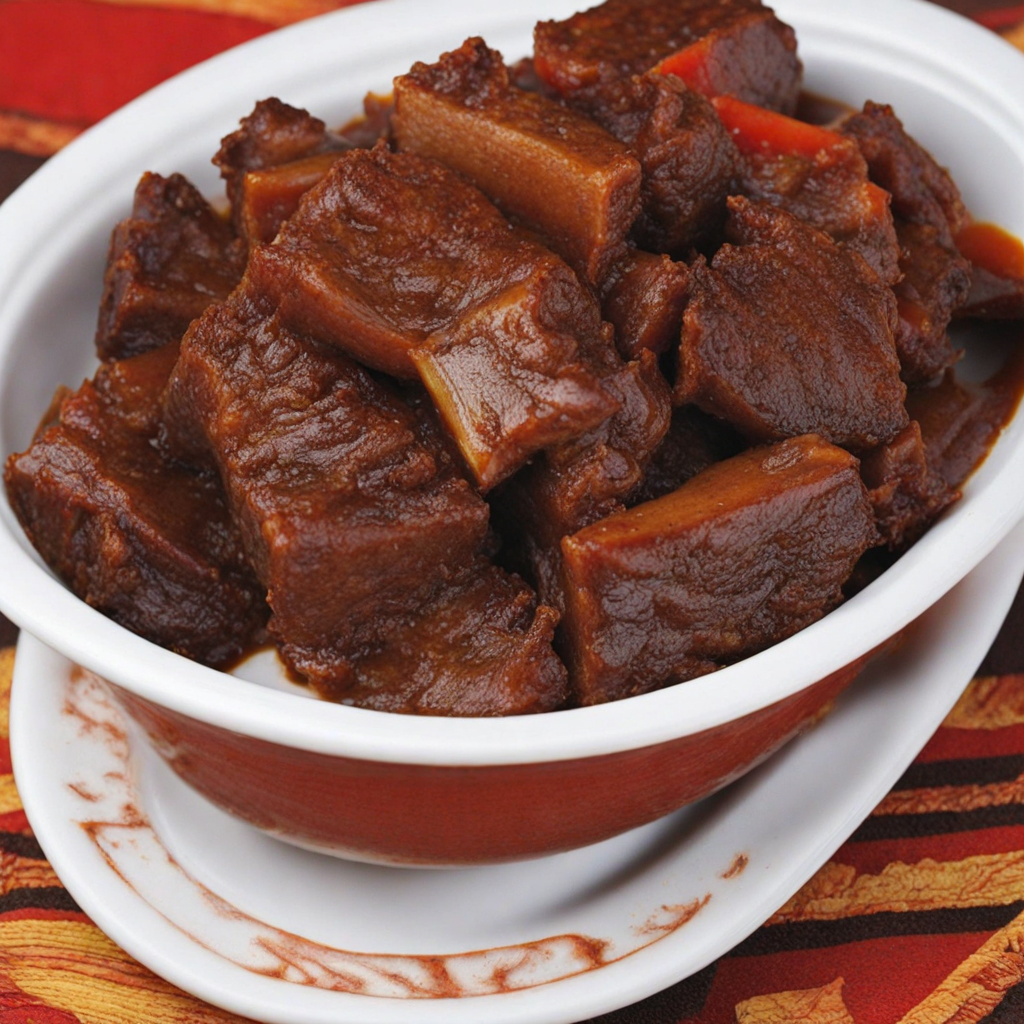Grilled Corn
Grilled Corn, known locally as "Maqhudzu," is a beloved street food in Eswatini that captures the essence of the country’s vibrant culinary culture. The corn is harvested at peak freshness, ensuring a natural sweetness that is enhanced by the grilling process. Vendors often prepare the corn over an open flame, allowing the kernels to char slightly, which adds a smoky flavor that beautifully complements the inherent sweetness of the corn. The aroma that wafts through the air while the corn is being grilled is irresistible, drawing in locals and visitors alike. Once cooked, the corn is often brushed with a mix of spices, which may include chili powder, salt, and a hint of lime juice. This seasoning elevates the dish, providing a delightful contrast to the sweetness of the corn. The texture is another appealing aspect; the kernels remain juicy and tender, while the charred exterior offers a satisfying bite. Eating Grilled Corn is not just about flavor; it’s also about the experience, as it’s typically served on a stick, making it a perfect snack to enjoy while strolling through local markets or during festive gatherings. Grilled Corn is more than just a food item; it’s a cultural staple that brings people together. Whether enjoyed as a quick snack or a side dish at a larger meal, it reflects the communal spirit of Eswatini. The simplicity of the ingredients highlights the country’s focus on fresh, local produce, making it a must-try for anyone seeking to explore the rich flavors of Eswatini’s culinary landscape. Each bite transports you to the heart of the country, making Grilled Corn a delicious way to connect with its traditions.
How It Became This Dish
The Story of Umbila: A Culinary Heritage of Eswatini #### Origins: A Grain of Tradition Umbila, a staple food in Eswatini (formerly known as Swaziland), is a type of maize porridge that has roots deeply intertwined with the cultural and agricultural history of the region. Maize, introduced to Africa from the Americas during the Columbian Exchange in the 16th century, quickly adapted to various African climates, including the fertile lands of Eswatini. The Swazi people embraced this new crop, transforming it into a cornerstone of their diet and culture. Historical records suggest that maize cultivation in Eswatini began in earnest during the late 19th century, coinciding with the establishment of colonial influences in southern Africa. However, local grains like sorghum and millet had been staples long before maize's introduction. The transition from these indigenous grains to maize reflects not only agricultural adaptation but also the broader socio-political changes occurring in the region. Umbila is made by cooking ground maize into a thick porridge, a practice that embodies the Swazi philosophy of resourcefulness. Traditionally, the maize is ground using a mortar and pestle or a grinding stone, a labor-intensive process that connects the community through shared work and social interaction. The preparation of Umbila often involves the whole family, reinforcing communal bonds and cultural traditions. #### Cultural Significance: A Food of the People In Eswatini, food is more than sustenance; it embodies identity, tradition, and social cohesion. Umbila is not just a meal; it is a symbol of hospitality and communal living. It is served during important cultural ceremonies, family gatherings, and celebrations, representing abundance and togetherness. The Swazi people often pair Umbila with a variety of accompaniments, such as vegetables, meats, or sauces, making it a versatile dish that can be adapted to suit various occasions. The significance of Umbila extends beyond the dinner table; it is also pivotal in rituals and rites of passage. For instance, during traditional weddings, Umbila is often served to guests as a sign of respect and generosity. Its inclusion in such ceremonies underscores its role in fostering community ties and honoring cultural heritage. Moreover, Umbila has become a symbol of resilience for the Swazi people. In times of hardship—be it during droughts, economic struggles, or political unrest—Umbila remains a reliable source of nourishment. Its preparation and consumption serve as a reminder of the strength and adaptability of the Swazi culture in the face of adversity. #### Development Over Time: From Tradition to Modernity As Eswatini has evolved over the years, so too has the preparation and consumption of Umbila. In the past, it was primarily a rural dish, prepared in households where traditional methods prevailed. However, as urbanization has taken hold in Eswatini, the ways in which Umbila is made and enjoyed have expanded. Modernization has introduced new cooking technologies, such as electric grinders and stoves, which have made the preparation of Umbila faster and more efficient. While these advancements have made it easier to prepare this beloved dish, many families continue to honor traditional methods, emphasizing the importance of heritage in their culinary practices. This duality reflects a broader trend where contemporary lifestyles intersect with age-old traditions, creating a dynamic culinary landscape. In recent years, Umbila has also gained attention outside of Eswatini. As the global food scene increasingly values authentic and traditional dishes, Umbila has emerged as a representative of Swazi cuisine. This newfound interest has led to the exploration of Umbila in restaurants and culinary events both locally and internationally, showcasing its versatility and cultural significance. Furthermore, the rise of the farm-to-table movement has renewed interest in local grains and traditional foods. As health consciousness grows, many are looking back to their roots, rediscovering the nutritional benefits of whole grains like maize. Umbila, rich in carbohydrates and fiber, fits perfectly into this narrative, promoting not only health but also cultural preservation. #### Umbila Today: A Symbol of Identity Today, Umbila serves as a culinary emblem of Eswatini's rich heritage and cultural identity. It embodies a sense of belonging, connecting the Swazi people to their ancestors while adapting to modern tastes and lifestyles. The dish is often featured in national celebrations, such as the Reed Dance, where it symbolizes the unity of the Swazi nation. In recent years, initiatives aimed at promoting local cuisine and preserving cultural practices have gained momentum. Organizations and community groups are working to educate younger generations about the significance of Umbila and other traditional dishes. Workshops and cooking classes are becoming increasingly popular, allowing the wisdom of older generations to be passed down. This revival not only sustains culinary traditions but also reinforces the cultural identity of the Swazi people in a rapidly changing world. Additionally, with the rise of social media and food blogging, Umbila has found a new platform for appreciation and promotion. Pictures and recipes shared online have sparked interest beyond borders, inviting food enthusiasts to explore the flavors of Eswatini. This digital renaissance is helping to elevate Umbila from a traditional staple to a celebrated dish on the global stage. #### Conclusion: A Culinary Legacy Umbila is more than just a dish; it is a narrative woven into the fabric of Eswatini’s history and culture. From its origins as a humble maize porridge to its current status as a symbol of resilience and community, Umbila encapsulates the spirit of the Swazi people. As it continues to adapt and thrive in a modern context, Umbila stands as a testament to the enduring power of food as a cultural connector, a source of sustenance, and a reflection of identity. In every bowl of Umbila served, there lies a story of heritage, unity, and the rich tapestry of Eswatini’s culinary landscape.
You may like
Discover local flavors from Eswatini







